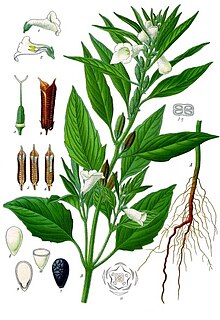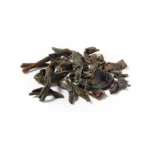Introduction to Sesame Plants
Sesame plants are more than just a staple in your favorite dishes; they’re fascinating little wonders that bring both flavor and beauty to your garden.
These hardy annuals, known for their tiny seeds, have been cherished for thousands of years.
Imagine stepping outside to see lush green foliage swaying gently in the breeze, promising a bountiful harvest ahead.
If you’ve ever considered growing sesame at home, you’re not alone.
With the right knowledge and care, you can cultivate these unique plants right in your backyard.
Not only do they produce delicious seeds ready for cooking or snacking, but they also attract beneficial insects that help improve your overall garden health.
So let’s dive into how to grow and care for sesame plants! Whether you’re an experienced gardener or just starting out, this guide will equip you with everything needed to get started on this rewarding journey.
Choosing the Right Location and Soil for Growing Sesame
Choosing the right location for sesame plants is crucial. They thrive in warm climates, ideally with temperatures between 70°F and 90°F. Look for a sunny spot that receives full sunlight throughout the day.
Soil quality plays an equally important role. Sesame prefers well-drained, sandy or loamy soil rich in organic matter. Before planting, test your soil’s pH; it should be slightly acidic to neutral, around 6.0 to 7.0.
Avoid overly wet areas as sesame roots are sensitive to waterlogged conditions. If your garden has heavy clay soil, consider raised beds to improve drainage.
Ensure good airflow around the plants by spacing them adequately when planting. This will help prevent diseases while promoting healthy growth and development of your sesame crop.
Planting and Germination Process for Sesame Seeds
Planting sesame seeds is a straightforward process that can lead to a rewarding harvest. Start by selecting high-quality, organic seeds. This ensures optimal growth and flavor.
Prepare your soil about two weeks before planting. Sesame thrives in well-draining soil enriched with compost or organic matter. Aim for a pH level between 6 and 7 for the best results.
When temperatures consistently reach between 70°F to 85°F, it’s time to plant. Sow the seeds approximately half an inch deep, spacing them around six inches apart. This allows enough room for their roots to expand.
Water gently after planting but avoid over-saturating the soil. Germination usually occurs within seven to fourteen days under ideal conditions, so keep an eye out for those tiny green shoots emerging from the earth! Ensuring proper moisture levels during this stage will support healthy seedling development as they establish themselves in their new home.
Proper Care and Maintenance for Sesame Plants
Proper care is vital for healthy sesame plants. Start by ensuring they get plenty of sunlight. They thrive in full sun, so choose a spot that basks in direct light for six to eight hours daily.
Watering should be done carefully. Sesame plants are drought-tolerant but benefit from consistent moisture during the flowering period. Aim for deep watering every week, especially if rainfall is scarce.
Fertilization can help boost growth. Use a balanced fertilizer before planting and again when flowers emerge. This supports nutrient absorption as the plant matures.
Regular weeding prevents competition for nutrients and space. Keep the area around your sesame plants clear to promote healthy growth.
Watch out for pests or signs of disease regularly. Early detection helps maintain strong and vigorous plants throughout their growing cycle.
Harvesting and Storing Sesame Seeds
Harvesting sesame seeds is an exciting part of the growing process. You’ll know it’s time when the seed pods turn brown and begin to dry out. Patience is key here; waiting too long can lead to seeds spilling from the pods.
To harvest, gently cut the stems with a sharp tool and place them in a basket or cloth. It’s ideal to do this on a dry day to prevent moisture issues.
After collecting your bounty, hang the bundles upside down in a cool, shaded area for about two weeks. This ensures that any remaining moisture evaporates.
Once fully dried, you can start extracting the seeds by shaking or rubbing the pods between your fingers. Store them in airtight containers away from light and heat for maximum freshness. Proper storage keeps those delicious flavors intact for future culinary adventures!
Common Pests and Diseases of Sesame Plants
Sesame plants can face various pests and diseases that threaten their growth. One common pest is the sesame borer, which burrows into stems and leaves. These pests weaken the plant, making it susceptible to other issues.
Aphids are another nuisance; they feed on sap and can cause stunted growth. Keeping an eye out for these tiny insects early in the season can help prevent larger infestations.
Fungal infections like downy mildew may also occur, especially in humid conditions. This disease manifests as yellow patches on leaves and requires prompt action to manage.
Regularly inspecting your plants for signs of distress is crucial. Implementing integrated pest management strategies will keep your sesame healthy and productive throughout its growing cycle.
Benefits of Growing Your Own Sesame Plants
Growing your own Sesame Plants comes with a plethora of benefits. First, you gain access to fresh seeds right from your garden. Freshly harvested sesame seeds are packed with flavor and nutrients.
Cultivating sesame allows you to control the growing conditions. You can choose organic methods, avoiding harmful pesticides and chemicals that may be present in store-bought options.
Additionally, nurturing these plants can be a rewarding experience. Watching them grow from tiny seeds into tall stalks fosters a sense of connection to nature.
Sesame Plants also attract beneficial insects. These pollinators help create a thriving ecosystem in your garden.
Homegrown sesame can inspire culinary creativity. You might find yourself experimenting with recipes featuring tahini or sprinkling roasted seeds on salads for extra crunch.
Conclusion
Sesame Plants Growing sesame plants can be a rewarding endeavor. These versatile plants not only add beauty to your garden but also provide you with nutritious seeds. By understanding their care requirements, from choosing the right location and soil to managing pests and diseases, you can cultivate healthy and productive sesame crops.
Sesame Plants The benefits of growing your own sesame are numerous. You gain access to fresh seeds for culinary uses while enjoying the satisfaction of nurturing a plant from seed to harvest. With proper attention and care, your sesame plants will thrive, offering both aesthetic appeal and valuable yields.
Sesame Plants Embrace the journey of planting sesame in your garden or backyard. It’s more than just gardening; it’s about connecting with nature and enhancing your meals with homegrown goodness. Happy gardening!





